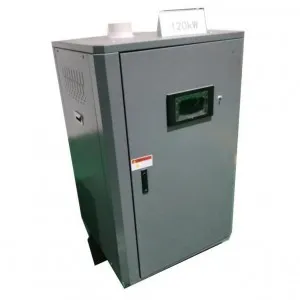- Afrikaans
- Albanian
- Amharic
- Arabic
- Armenian
- Azerbaijani
- Basque
- Belarusian
- Bengali
- Bosnian
- Bulgarian
- Catalan
- Cebuano
- China
- China (Taiwan)
- Corsican
- Croatian
- Czech
- Danish
- Dutch
- English
- Esperanto
- Estonian
- Finnish
- French
- Frisian
- Galician
- Georgian
- German
- Greek
- Gujarati
- Haitian Creole
- hausa
- hawaiian
- Hebrew
- Hindi
- Miao
- Hungarian
- Icelandic
- igbo
- Indonesian
- irish
- Italian
- Japanese
- Javanese
- Kannada
- kazakh
- Khmer
- Rwandese
- Korean
- Kurdish
- Kyrgyz
- Lao
- Latin
- Latvian
- Lithuanian
- Luxembourgish
- Macedonian
- Malgashi
- Malay
- Malayalam
- Maltese
- Maori
- Marathi
- Mongolian
- Myanmar
- Nepali
- Norwegian
- Norwegian
- Occitan
- Pashto
- Persian
- Polish
- Portuguese
- Punjabi
- Romanian
- Russian
- Samoan
- Scottish Gaelic
- Serbian
- Sesotho
- Shona
- Sindhi
- Sinhala
- Slovak
- Slovenian
- Somali
- Spanish
- Sundanese
- Swahili
- Swedish
- Tagalog
- Tajik
- Tamil
- Tatar
- Telugu
- Thai
- Turkish
- Turkmen
- Ukrainian
- Urdu
- Uighur
- Uzbek
- Vietnamese
- Welsh
- Bantu
- Yiddish
- Yoruba
- Zulu
Aug . 08, 2024 06:05 Back to list
Understanding the Importance of Approach Temperature in Enhancing Heat Exchanger Efficiency and Performance
Understanding Approach Temperature in Heat Exchangers
Heat exchangers play a critical role in many industrial processes, facilitating the transfer of heat between two or more fluids. One of the key parameters that engineers consider when designing and evaluating the performance of a heat exchanger is the approach temperature. This concept is vital for optimizing heat transfer efficiency, ensuring safety, and achieving energy savings.
What is Approach Temperature?
The approach temperature refers to the temperature difference between the outlet temperature of one fluid and the inlet temperature of the other fluid in a heat exchanger. It represents the closeness of two fluid temperatures at which heat exchange occurs. Specifically, in counterflow heat exchangers, the approach temperature is often defined as the difference between the cold fluid outlet temperature and the hot fluid inlet temperature.
Mathematically, the approach temperature \( \Delta T_a \) can be expressed as \[ \Delta T_a = T_{hot,in} - T_{cold,out} \] Where - \( T_{hot,in} \) is the temperature of the hot fluid entering the heat exchanger, - \( T_{cold,out} \) is the temperature of the cold fluid exiting the heat exchanger.
A lower approach temperature indicates a more effective heat transfer process, as it suggests that the fluids are closer in temperature, and more heat is being exchanged.
Importance of Approach Temperature
1. Efficiency The approach temperature is crucial for determining the thermal performance of a heat exchanger. A smaller approach temperature generally corresponds to a higher heat transfer rate, thereby improving the overall efficiency of the heat exchanger. This optimal thermal performance can significantly reduce energy consumption in industrial applications.
approach temperature for heat exchanger

2. Design Considerations Engineers must carefully consider the approach temperature when designing heat exchangers. The desired approach temperature influences the selection of materials, the type of heat exchanger, and its size. A tighter approach may require larger surface areas, specialized materials to withstand higher temperatures, and precise flow arrangements to enhance turbulent flow, which promotes better heat transfer.
3. Operational Constraints In practice, maintaining an ideal approach temperature is crucial for the longevity and reliability of the heat exchanger. Operating with too small of an approach temperature can lead to fouling and scaling issues, requiring more frequent maintenance and reducing operational efficiency.
4. Economic Implications The approach temperature also has economic implications. A lower approach may improve heat recovery systems, reducing waste heat and subsequently minimizing fuel costs. However, excessive investments in achieving extremely low approach temperatures may not always be cost-effective. Engineers must find a balance between performance and economic feasibility.
Challenges and Optimization
Achieving the desired approach temperature poses several challenges. Variability in fluid properties, flow rates, and operational conditions can affect heat transfer performance. Therefore, real-time monitoring and control systems are often implemented to adjust operational parameters dynamically and optimize approach temperature.
Additionally, advanced computational fluid dynamics (CFD) simulations can help in designing heat exchangers with desired approach temperatures. These simulations allow engineers to visualize flow patterns and temperature distributions, leading to better-informed design decisions.
Conclusion
The approach temperature is an essential transient in the realm of heat exchanger design and performance evaluation. By understanding and optimizing this parameter, engineers can enhance thermal efficiency, reduce operational costs, and ensure that systems operate within safe parameters. As industries strive for improved energy efficiency and sustainability, the significance of approach temperature in heat exchangers will continue to grow, shaping the future of heat transfer technologies.
-
8mm Thin-Walled Cast Steel Manhole Cover Pallet Bottom Ring | Durable
NewsAug.04,2025
-
Premium Cast Iron Water Main Pipe: Durable, Corrosion-Resistant
NewsAug.03,2025
-
Durable Cast Iron Water Mains | AI-Optimized Systems
NewsAug.02,2025
-
High-Efficiency Propane Boiler for Baseboard Heat | Save Energy
NewsAug.01,2025
-
Premium Source Suppliers for Various Gray Iron Castings
NewsJul.31,2025
-
Durable Cast Iron Water Main Pipes | Long-Lasting
NewsJul.31,2025


